Assam
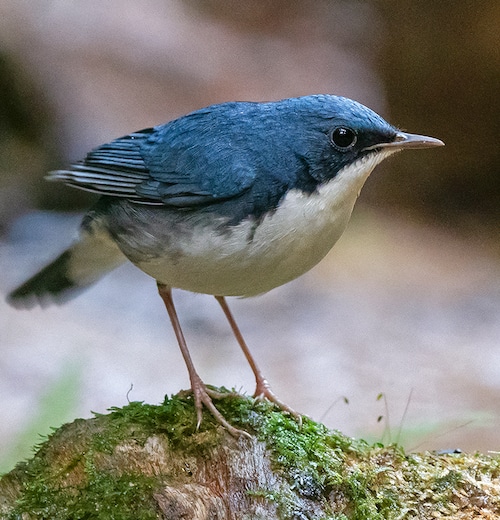
Assam is a state in northeastern India, south of the eastern Himalayas along the Brahmaputra and Barak River valleys. It covers an area of 78,438 km2 (30,285 square miles) and is the second largest state in northeastern India by area and the largest in terms of population, with more than 31 million inhabitants. The state is bordered by Bhutan and Arunachal Pradesh to the north; Nagaland and Manipur to the east; Meghalaya, Tripura, Mizoram and Bangladesh to the south; and West Bengal to the west via the Siliguri Corridor, a 22-kilometre-wide (14 mile) strip of land that connects the state to the rest of India. Assamese and Bodo are two of the official languages for the entire state and Meitei (Manipuri) is recognised as an additional official language in three districts. The state has 35 districts with 5 divisions. Guwahati (containing the state capital Dispur) is the largest city in northeastern India. Assam is known for Assam tea and Assam silk and the state was the first site for oil drilling in Asia.

Brahmaputra River – ©Bird-Photo-Tours ASIA
Assam has three of six physiographic divisions of India – The Northern Himalayas (Eastern Hills), The Northern Plains (Brahmaputra plain) and Deccan Plateau (Karbi Anglong. Urban centres include Guwahati, one of the 100 fastest growing cities in the world. Iti is also referred to as the ‘Gateway to the North-East India’. Silchar, (in the Barak valley) is the second most populous city in Assam and an important centre of business. Other large cities include Dibrugarh, an oil and natural gas industry centre.
With the tropical monsoon climate, Assam is temperate (summer maximum temperatures are 35 to 38 °C and the winter minimum at 6 to 8 °C) and experiences heavy rainfall and high humidity. The climate is characterised by heavy monsoon downpours reducing summer temperatures and making for foggy nights and mornings in winters, frequently during the afternoons. Spring (March to April) and autumn (September to October) are usually pleasant with moderate rainfall and temperature. Assam’s agriculture usually depends on the south-west monsoon rains.
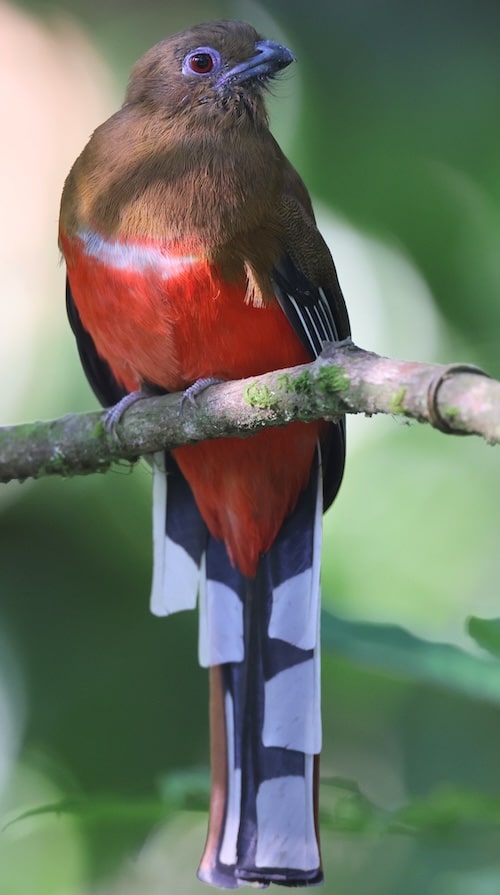
Red-headed Trogon Harpactes erythrocephalus – ©Bird-Photo-Tours ASIA
Every year, rivers like the Brahmaputra and Barak overflow due to heavy rainfall, causing widespread flooding across Assam. The rising water levels submerge nearby areas, washing away houses, livestock, and damaging infrastructure such as bridges, railway tracks, and roads, leading to communication breakdowns in many regions. This annual natural disaster also results in numerous fatalities throughout the state.
Assam is one of the richest biodiversity zones in the world and consists of tropical rainforests, deciduous forests, riverine grasslands, bamboo orchards and numerous wetland ecosystems; Many are now protected as national parks and reserved forests.
Assam has significant wildlife sanctuaries, the most prominent of which are two UNESCO World Heritage Sites the Kaziranga National Park, on the bank of the Brahmaputra River, and the Manas Wildlife Sanctuary, near the border with Bhutan. The Kaziranga is a refuge for the fast-disappearing Indian one-horned rhinoceros and the state provides one of the last wild habitats for the Asian elephant. Other mammals include Bengal tiger, pygmy hog, gaur, wild water buffalo, Indian hog deer, hoolock gibbon, golden langur, capped langur, Barasingha and Ganges River Dolphin. The state has the largest population of the wild water buffalo in the world. Other scarce taxa include Barca snakehead, Ganges shark, Burmese python, Brahminy River Turtle, black pond turtle, Asian forest tortoise, and Assam roofed turtle. The Assamese economy is aided by wildlife tourism to Kaziranga National Park and Manas National Park. Dibru-Saikhowa National Park is famed for its feral horses. Sal tree forests are found in the state which, as a result of abundant rainfall, look green all year round. Assam receives more rainfall than most parts of India; this rain feeds the Brahmaputra River, whose tributaries and oxbow lakes provide the region with a distinctive hydro-geomorphic environment.
Birding Assam
Assam, the land of mystique blue hills and valleys interspersed by hundreds of rivers and wetlands serve as a rare refuge for diverse life forms. The rare biological diversity of this beautiful province of the Indian subcontinent results from the unique conjunction of four different Biomes (Sino-Himalayan Temperate Forest, Sino-Himalayan Subtropical Forest, Indo-Chinese Tropical Moist Forest and Indo-Gangetic Plain) in one place – Assam. This means that it harbours numerous endangered and endemic species of flora and fauna, which has made this little-known area a Global Biodiversity Hotspot.
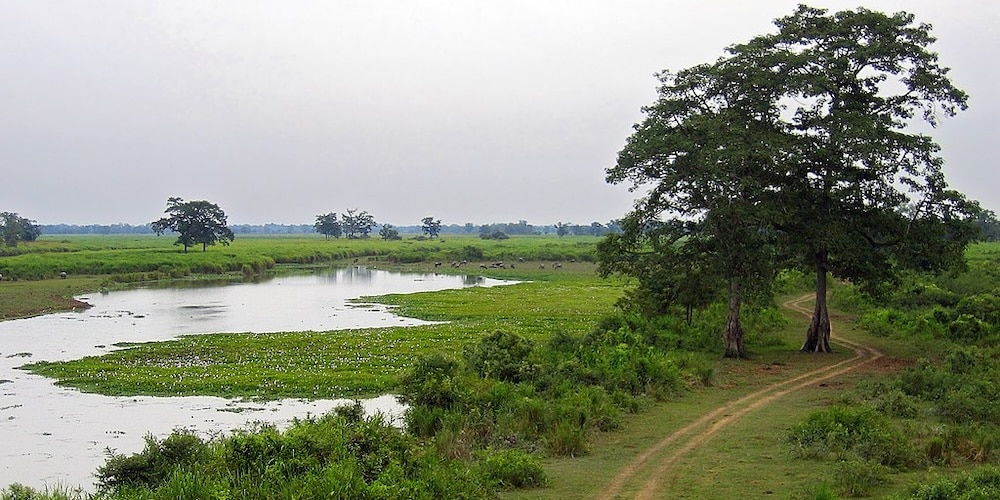
Kaziranga National Park – ©Peter Andersen CC BY-SA 3.0 via Wikimedia Commons
The state is the last refuge for numerous endangered and threatened species including bird species such as White-winged Wood Duck or ‘deohanh’, Bengal Florican, Black-breasted Parrotbill, Red-headed and White-rumped Vultures, Greater Adjutant, Jerdon’s Babbler and Rufous-necked Hornbill. For the state bird, the white-winged wood duck, Assam is a globally important area. In addition to the above, there are three other National Parks in Assam namely Dibru Saikhowa National Park, Nameri National Park and the Orang National Park.
Assam has 80% of the c.1200 bird species recorded in the Indian subcontinent and is also home to 3,107 species of flowering plants, 192 species orchids, 185 species of reptiles, 190 species of mammals and hundreds of species of butterflies and other insects. Besides its widely visited, protected areas, Bird life International has designated two dozen Important Bird Areas in Assam.
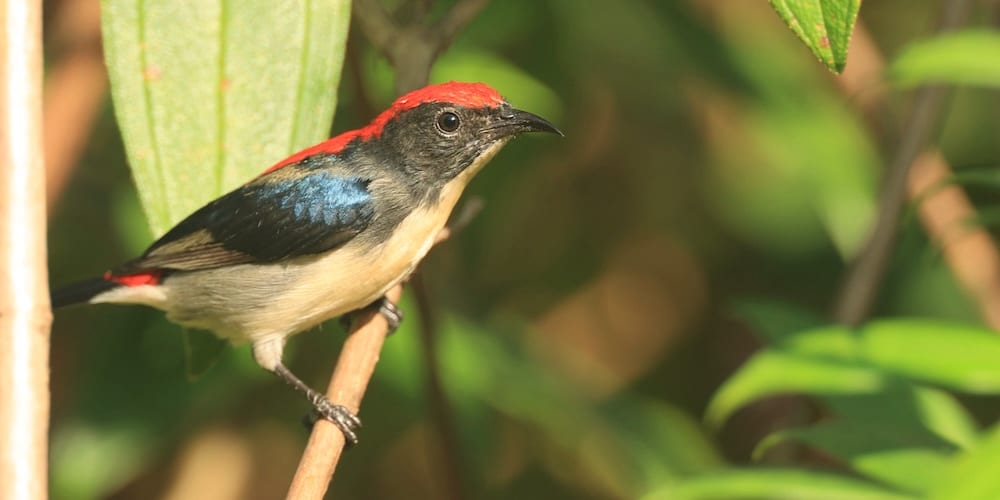
Scarlet-backed Flowerpecker Dicaeum cruentatum – ©Bird-Photo-Tours ASIA
Being associated with the ‘Green Guard’ (an NGO working in Assam for nature and natural resource conservation for several decades) the contributor of this section personally had the privilege to study birds in poorly known, and at times less-explored, areas of Assam. One such area is Deobali Jalah, (Jalah in Assamese stands for Wetland) which is an Important Bird Area covering around 15 km2 and which is in the Nagaon district of Central Assam. Studies undertaken so far in this particular area has generated a list of well over 100 species of birds including 10 Red Data Book species such as Asian Openbill Stork Anastomus oscitans, Lesser Adjutant Stork Leptotilos javanicus, Greater Adjutant Stork Leptotilos dubious, White Eyed or Ferruginous Pochard Aythya nyroca, Baer’s Pochard Aythya baeri, Red-necked or Red-headed Falcon Falco chicquera, Swamp Francolin Francolinus gularis, Manipur Bush Quail Perdicula manipurensis, Jerdon’s Bushchat Saxicola jerdoni, Bristled Grass Warbler Chaetornis straitus. Moreover, Java Munia Lonchura oryzivora, previously unrecorded from the Northeastern region of India, has also has been sighted in the Deobali area.
-
Number of bird species: 956
(As at June 2025)State Bird: White-winged Duck Asarcornis scutulata
-
Avibase
PDF ChecklistThis checklist includes all bird species found in Assam , based on the best information available at this time. It is based on a wide variety of sources that I collated over many years. I am pleased to offer these checklists as a service to birdwatchers. If you find any error, please do not hesitate to report them. -
E-Bird
PDF ChecklistThis checklist is generated with data from eBird (ebird.org), a global database of bird sightings from birders like you. If you enjoy this checklist, please consider contributing your sightings to eBird. It is 100% free to take part, and your observations will help support birders, researchers, and conservationists worldwide.
-
A Photographic Field Guide to the Birds of the Himalayas and South Assam Hills
| By Bikram Grewal, Sumit Sen, Sarwandeep Singh, Nikhil Devasar & Garima Bhatia | 2024 | Om Books International | Flexibound | 519 pages, 2000+ colour photos, colour distribution maps | ISBN: 9788119750009 Buy this book from NHBS.com -
An Amateur's Guide to Birds of Assam
| By Jayaditya Purkayastha | EBH Publishers | 2015 | Hardback | 129 pages, colour photos, colour distribution maps | ISBN: 9789383252695 Buy this book from NHBS.com -
Birds of the Indian Subcontinent
| By Richard Grimmett, Carol Inskipp & Tim Inskipp | Helm | 2025 | Edition 2 | Paperback | 544 pages, 240+ plates with colour illustrations; colour distribution maps, b/w illustrations | ISBN: 9781472984777 Buy this book from NHBS.com -
The Birds of Assam
| By Anwarddin Choudhury | The Rhino Foundation | 2000 | Hardback | 240 pages, colour photos, illustrations, maps | Out of Print | ISBN: 9788190086615 Buy this book from NHBS.com -
Threatened Birds of Assam
| By Asad R Rahmani & Anwaruddin Choudhury | Oxford University Press | 2013 | Paperback | 165 pages, 80 colour photos and illustrations, 17 colour distribution maps | ISBN: 9780198090533 Buy this book from NHBS.com
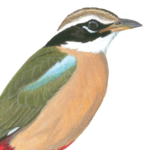
Birds of the Indian Subcontinent
Apple iOS | AndroidThe eGuide to Birds of the Indian Subcontinent is an interactive companion to Birds of the Indian Subcontinent – the definitive guide for birdwatchers visiting the region. It covers India, Pakistan, Nepal, Bhutan, Bangladesh, Sri Lanka and the Maldives. This application has specific features that will enhance your birding experience.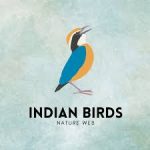
Indian Birds
Apple iOS | AndroidPioneers in bringing Indian Birding to the smart phone generation - Introducing Indian Birds, the time-honoured and cherished birding companion for India. Established in 2010, it proudly remains the sole mobile app available on App Store, offering bird enthusiasts the ability to explore bird namesOrganisations-
Assam Bird Monitoring Network
Instagram PageGet ready to take flight with us! Join the Bohag Bihu Bird Count -
BONORIA - Assam Wildlife Conservation and photographic Society
FacebookmPageAn attempt to create a platform for wildlife photography which is an unique genre of photography, needs unique attention and dedication and recognition. This platform will also an attempt to create awareness about wildlife and it's conservation. -
Bird watchers of Assam
FacebookmPageThis group is for passionate bird lovers, anyone can use it for awareness campaigns, but posting an advertisement is strictly prohibited. This group is open to discussions.
Reserves-
*List of protected areas of Assam
InformationSatellite ViewAssam protected areas includes Seven national parks (2.51% of Assam's area), 17 wildlife sanctuaries (98.88% of Assam's area), and three proposed wildlife sanctuaries. -
BS WS Pani Dihing
InformationSatellite ViewIt s a 33.93-square-kilometre (13.10 sq mi) wildlife sanctuary located in Sivasagar district, Assam. It is 22 km (14 mi) away from Sivasagar town. As many as 267 species of birds including 70 species of migratory birds have been identified and recorded at Pani Dihing. -
NP BR Dibru-Saikhowa
InformationSatellite ViewIt is located in Dibrugarh and Tinsukia districts and was designated a Biosphere Reserve in July 1997 with an area of 765 km2 (295 sq mi), including a core area of 340 km2 (130 sq mi) and a buffer zone of 425 km2 (164 sq mi). Birds recorded include greater adjutant, ferruginous pochard, Jerdon's babbler, black-breasted parrotbill, marsh babbler, puff-throated babbler, Jerdon's bushchat, rufous-rumped grassbird, chestnut-crowned bush warbler, lesser adjutant, Sarus crane, Bengal florican, spot-billed pelican and white-necked stork to name a few. -
NP Kaziranga
InformationSatellite ViewKaziranga is a vast expanse of tall elephant grass, marshland, and dense tropical moist broadleaf forests, crisscrossed by four major rivers, including the Brahmaputra, and the park includes numerous small bodies of water. The sanctuary, which hosts two-thirds of the world's great one-horned rhinoceroses, is a World Heritage Site and is home to the highest density of tigers among protected areas in the world. It is home to a variety of migratory birds, water birds, predators, scavengers, and game birds. Birds such as the lesser white-fronted goose, ferruginous duck, Baer's pochard duck and lesser adjutant, greater adjutant, black-necked stork, and Asian openbill stork migrate from Central Asia to the park during winter. Riverine birds include the Blyth's kingfisher, white-bellied heron, Dalmatian pelican, spot-billed pelican, Nordmann's greenshank, and black-bellied tern. Birds of prey include the rare eastern imperial, greater spotted, white-tailed, Pallas's fish eagle, grey-headed fish eagle, and the lesser kestrel. -
NP Nameri
InformationSatellite ViewNameri National Park is a national park in the foothills of the eastern Himalayas in the Sonitpur District of Assam, India, about 35 km from Tezpur. Nameri is about 9 km from Chariduar, the nearest village. Of the over 300 species a number stand out such as white-winged wood duck, great pied hornbill, wreathed hornbill, rufous-necked hornbill, black stork, ibisbill, blue-bearded bee-eaters, babblers, and many others. -
NP Orang
InformationSatellite ViewThe Orang National Park also known as Rajiv Gandhi Orang National Park which is located on the north bank of the Brahmaputra River in the Darrang and Sonitpur districts of Assam, India, covers an area of 78.81 square kilometres (30.43 sq mi). More than 220 species of bird are recorded and many special mammals including rhino and tiger. -
NP TR Manas
InformationSatellite ViewLocated in the Himalayan foothills, it is contiguous with the Royal Manas National Park in Bhutan. The park is known for its rare and endangered endemic wildlife such as the Assam roofed turtle, hispid hare, golden langur and pygmy hog. Manas is famous for its population of the wild water buffalo. The sanctuary has recorded 55 species of mammals and 450 species of birds. It has the largest population of the endangered Bengal florican to be found anywhere. -
WS Borail
InformationSatellite ViewThe sanctuary consists of the North Cachar Reserve Forest and Borail Reserve Forest, which are classified as tropical moist evergreen and semi-evergreen forests. The forest is home to a wide diversity of wildlife. -
WS Chakrashila
InformationSatellite ViewConservation drive for golden langur by Nature's Beckon The sanctuary covers an area of 45.568 km2 (4556.8 hectares). It is around 6 km from Kokrajhar town, 68 km from Dhubri town and 219 km from Lokpriya Gopinath Bordoloi International Airport, Guwahati. The sanctuary is mainly a hilly tract running north-south and there are two lakes (Dheer Beel and Diplai Beel) on either side, which are integral to the eco-system of the sanctuary. A total of 119 species of birds have been recorded in the Chakrashila Wildlife Sanctuary. This number includes three globally threatened species. -
WS Dehing Patkai
InformationSatellite ViewThis sanctuary is also a part of Dehing-Patkai Elephant Reserve. The rainforest stretches for more than 575 km2 (222 sq mi) in the districts of Dibrugarh, Tinsukia and Sivasagar. Dehing Patkai rainforest harbours about 293 bird species, belonging to 174 genera and 51 families. The majority is resident (63.7%), some are winter visitors (23.1% ), and very few are summer visitors (2.5%). About 10.7% are altitudinal migrants, coming mainly from the higher reaches of the western, central and eastern Himalayas. -
WS Laokhowa - Borachapori
InformationSatellite ViewIt is situated 40 km downstream of the Kaziranga National Park and 30 km northwest of the Orang National Park on the other side of the river Brahmaputra. -
WS Nambor - Doigrung
InformationSatellite ViewThe sanctuary along with Garampani Wildlife Sanctuary (6 km2) and Nambor Wildlife Sanctuary (37 km2) are a part of the Kaziranga-Karbi Anglong Elephant Reserve. -
WS Sonai Rupai
InformationSatellite ViewA wide variety of birds including white winged wood duck, hornbill, pelican, etc. and various types of migratory birds. -
WS WII Dipor Bil
InformationSatellite ViewIt is a permanent freshwater lake, in a former channel of the Brahmaputra River, to the south of the main river. It is also called a wetland under the Ramsar Convention which has listed the lake in November 2002, as a Ramsar Site for undertaking conservation measures on the basis of its biological and environmental importance. The beel is a natural habitat to many varieties of birds. 219 species of birds including more than 70 migratory species are reported in the beel area. The largest congregations of aquatic birds can be seen, particularly in winter, with a reported recorded count of 19,000 water birds in a day. Some of the globally threatened species of birds like spotbilled pelican (Pelecanus philippensis), lesser adjutant stork (Leptoptilos javanicus), Baer’s pochard (Aythya baeri), Pallas' sea eagle (Haliaeetus leucogaster), greater adjutant stork (Leptoptilos dubius).
Sightings, News & Forums-
eBird
SightingseBirding This Month
Guides & Tour Operators-
All India Birding Tours
Local Tour OperatorEmbark on a 20-day bird-watching adventure through the Assam and Namdhapa regions, right in the heart of the Himalayas. It’s one of the most captivating birding destinations in existence. This tour was created with enthusiasts in mind, you’ll be able to dive deep into this rich landscape and find birds like no other. -
Arkaya Holidays
Local Tour OperatorNorth East India Birding Tour -
Arunachal Birding Tours
Local Tour OperatorManas and Kaziranga Birding Tour -
Asian Adventures
Local Tour Operator1 Week In Rhino Country - Visit Nameri and Kaziranga for 250 Species -
Assam Wildlife Safari
Local Tour Operatorhere are 1314 species of birds in India, with the north-east India supporting some of the highest avian diversity in the Orient, with over 850 species of Birds... -
Bird-Photo-Tours ASIA
Tour OperatorBird-Photo-Tours ASIA is the specialists in bird photography tours on the Asian continent with a portfolio of 50 bird photography tours across 26 countries and a particular specialism in bird photography in India including the State of Assam. -
BirdQuest
Tour OperatorNORTHEAST INDIA – The Ultimate Himalayan birding tour to Arunachal Pradesh, Assam, Nagaland and Manipur -
Birding Ecotours
Tour OperatorBirding Tour India: The Northeast – Spectacular Birds and Mammals -
Bluetail Birding
Tour OperatorA 14-day, small group birdwatching tour across the Eastern Himalayas, from the Brahmaputra basin up through untouched montane rainforest, emerging beyond the treeline at over 4000m. -
Bubo Birding
Tour OperatorKaziranga National Park in Assam hosts two-thirds of the world’s population of Great One-horned, or Indian, Rhinoceros, and is a World Heritage Site -
Curtain Call Adventures
Local Tour OperatorBirding Tour of Assam & Arunachal Pradesh -
India Birding Tours
Local Tour OperatorThink of birding in India, think of Assam. The green and hilly state, located in the northeast of the country, boasts the highest diversity of birds in India, making it a mecca for birders from across the world. -
India Birdwatching
Local Tour OperatorBirding in East Assam and Mishmi Hills - 10 Nights 11 Days tour package for Bird Watching in eastern reaches of India, to spectacular forests and wetlands. -
Jungle Travels India
Local Tour Operatorhe constant pursuit to deliver the ultimate birding expedition takes us to an isolated belt in Northeast India, spanning the Brahmaputra River in Assam to the eastern Himalayas of Arunachal Pradesh. -
Junglelore
Local Tour OperatorSpecial Birds and Mammals of Assam and Andamans – 250 Species in 2 weeks -
Kaziranga National Park
Local Tour OperatorKaziranga Birding Tour Packages -
Northeast Birding Tours
Local Tour OperatorThis part of the world supports some of the highest bird diversities in the Orient, with about 850 species. -
Rockjumper
Tour OperatorIndia - Northeast: Mishmi Hills & Assam specialities -
Shikhar Travels India
Local Tour OperatorBirding in Assam and West Bengal -
Tragopan Tours
Local Tour OperatorKaziranga National Park is situated in the floodplains of river Brahmaputra and is known for its three big mammals, Indian Rhinoceros, Wild Water Buffalo and Asian Elephant. Other speciality mammals of Kaziranga are Swamp Deer and Hoolock Gibbon. Birdlife is diverse and we will be looking for Bengal Florican, Grey-headed Fish Eagle, Pied Falconet, Great Myna, Finn’s Weaver, White-throated Bulbul, and Black-backed Forktail. -
Tropical Birding
Tour OperatorKaziranga alone offers 10+ mammal days, with plentiful rhinos, elephants, deer and buffalo to observe and photograph.
Trip Reports-
2017 [05 May] - James Eaton
PDF ReportThis mammoth tour of the Eastern Himalaya lived up to everything it was set up to be – we recorded a total of 455 species, but as always in this region, it is quality, not quantity that impressed us most. -
2018 [05 May] - Phil Gregory
ReportThe inaugural Field Guides NE India/Kaziranga trip proved adventurous, with some great birds and mammals and spectacular scenery, but beset by some unusually poor weather in the mountains. -
2019 [05 May] - James Eaton - Nagaland, Eaglenest, Assam and Mishmi Hills
PDF ReportThis mammoth tour of the Eastern Himalaya lived up to everything it was set up to be – we recorded a total of 495 species, a huge total considering nearly all wintering birds had dispersed northwards already but as always in this region, it is quality rather than quantity that impressed us most. -
2019 [05 May] - Shashank Dalvi - Nagaland, Assam and Mishmi Hills
PDF ReportThis short custom tour targeted, not just Asia's, but some of the world's least-known and most sought-after birds. It took us across three different states of northeast India, where we snaked our way through some fantastic habitats by way of some of the most poorly maintained roads in the country. -
2023 [04 April] - Rob Gordijn & Helen Rijkes
PDF ReportWe timed our trip at the same time as most tours for the last 3 weeks of April. The timing of the trips is quite important: high elevation birds are lower down in winter (into March), but wintering species leave by March and the wet season start from May (Kaziranga closes in the first week of May). Birds obviously sing more in spring, but the tragopans are probably more active in March. Also, Ibisbill is still very much possible around this time and higher elevation species like the bush-robins are much easier found. -
2023 [12 December] - Aseem Kumar Kothiala
ReportTucked away in South Assam, there is a forest named Dosdewa. Some rarities for India come here, including the Asian Stubtail. -
2024 [04 April] - Chewang R Bonpo
PDF ReportTour Report of Birding in North-East India -
2024 [04 April] - Daniel López-Velasco
PDF ReportWe saw over 470 species of birds, including almost all the possible specialties of our carefully designed itinerary, as well as many other uncommon and iconic species, mostly thanks to our amazing local guide Rofikul. -
2024 [04 April] - Glen Valentine
PDF ReportThe extensive and wildlife-rich Kaziranga National Park and the wilderness of Nameri have much to offer the keen birder, wildlife enthusiast and mammal lover alike and one never fails to be treated to a wealth of fabulous birds and mammals and a bounty of memorable sightings and experiences during a tour to India’s north-eastern corner and the state of Assam. -
2024 [05 May] - Bent Otto Poulsen
PDF ReportMostly an annotated list
Places to Stay-
Bansbani Lodge Manas
AccommodationBansbani Lodge is near the entrance of Manas National Park, one of the top birding sites of Assam -
Chang Bungalows - Diburgarh
AccommodationAccommodations in tea-plantation bungalows at Diburgarh, organise trips to good birding sites of Assam like Dibru-Saikhowa National Park which is important site for endangered birds like White-backed and Slender-billed Vultures, White-bellied Heron, Greater Adjutant, White-winged Wood Duck, Bengal Florican, etc, and for numerous other birds, Digboi, etc. Also, arranges trips to Arunachal sites. -
Wild Grass Resort - Kaziranga National Park
AccommodationThis is one of the top lodges at Kaziranga National Park with birding guides, library and other facilities. A good number of birds come into the property itself
Other Links
Fatbirder - linking birders worldwide...
Skip to content

